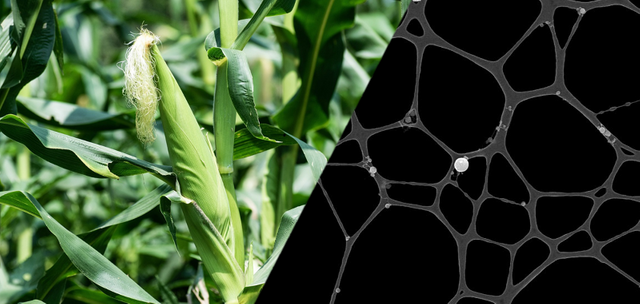Development of nanostructured surfaces from natural and sustainable raw materials
Perhaps few of us are aware of the reach that nanotechnology has these days in our daily life, as nanostructures and nanostructured materials are being widely used in basic research where mass transfer is a determining factor, such as biopolymers, heterogeneous catalysis and biosensors among others, but in industry they also have an important role, being used in products such as nanocomposites for the automotive industry, detection of bacteria by nanoparticles, nanodiagnostics and controlled release of drugs, implants among other uses in the medical industry, even in the cosmetics industry they are used in sun creams and colored contact lenses.

Nanostructures are very important in different fields. Source: image prepared in powerpoint, contains public domain images.
And although nanotechnology is still considered a science in its initial stages, it will undoubtedly mark a great revolution in the industry in the near future, which is why it is essential to consider the production of nanomaterials through ecologically sustainable techniques and materials, since currently limited materials and resources are used, being mostly various types of metals and products derived from fossil fuels, which is why it is required that technology advances along with materials and techniques that are sustainable and do not pose a danger in the future for the environment.
In this sense, the results of a new research from Linnaeus University raise the possibility of developing nanotechnology through the production of nanostructured materials produced in a more sustainable way, in which limited resources or those derived from fossil fuels can be substituted by more abundant and sustainable natural products, such as proteins derived from corn, milk or chitin obtained from the shells of crabs. The results of this research were recently shared in the journal Scientific Reports, and demonstrate that it is possible to create technological solutions from biomaterials.

The research shows that it is possible to elaborate nanostructures with biomaterials. Source: image elaborated in powerpoint with images from pixabay and wikimedia.
Nowadays it is highly desirable to produce nanomaterials with a predetermined morphology and physicochemical properties, to achieve the desired morphology are often used sacrificial templates that offer these characteristics, using a variety of materials ranging from porous membranes of anodized alumina, silica beads or soft beads of latex (polystyrene), which after guiding the structure of the materials are selectively removed.
That is why in this study they set the objective of demonstrating the possibility of using biopolymers for the fabrication of nanomaterials, using proteins and oligosaccharides as sacrificial structures.
The research group studied the usefulness of three materials specifically as a source of renewable and available raw material: zein, a natural protein from corn; casein, a protein contained in milk; and chitosan, a substance present in the shells of crabs. And the results of the research showed that the selected materials can be used to make nanostructures.

The research studied the usefulness of three materials: a corn protein; a milk protein; and chitosan, a substance found in the shells of crabs. Source: public domain images 1, 2, 3.
Zein-based nanostructured surfaces were prepared by casting in methanol solutions of defatted zein on Au/quartz wafers in the presence and absence of sacrificial templates. Images obtained by scanning electron spectroscopy (SEM) showed long-range arrays, with uniform spherical cavities interconnected in all cases. And when zein was substituted for casein and chitosan the results showed surfaces with characteristics comparable to those obtained with zein.
Although the results showed that this type of biomaterials looks promising to obtain nanostructured films, one of the challenges is to preserve the properties of the materials obtained, since in the same study the stability of the materials was evaluated after being stored for six months, and although the films obtained from zein were quite stable, the casein and chitosan films showed great deformation of structure after the storage period.
However, this study points very well to the possibility of substituting in the future the non-renewable raw materials currently used to produce nanostructured materials, thus opening the way to the study and development of easily available and sustainable raw materials, something that is very necessary since there is no doubt that in the future there will be greater demand for nanotechnological products, so it will be necessary to produce them using more efficient and environmentally friendly techniques.
Thanks for coming by to read friends, I hope you liked the information. See you next time.

hello @emiliomoron,
one of the materials that are quite good at creating nano structures is graphene, this material has shown that these structures can be made. it is believed that in the future this technology will be used to create devices that deliver drugs in a timely manner, the applications are endless, which is why i believe that this technology will generate billions of dollars in revenue in the very near future.
Undoubtedly in the near future there will be a revolution with everything related to nanotechnology, so we must promote sustainable practices from the beginning.
The development of nanostructured surfaces from natural and sustainable raw materials is a viable and environmentally friendly alternative.
Greetings friend and thanks for the valuable contribution.
Hello friend, yes, these are solutions that must be implemented for this industry to be sustainable.
@tipu curate 2
Upvoted 👌 (Mana: 0/5) Get profit votes with @tipU :)
Thanks for the support my friend!